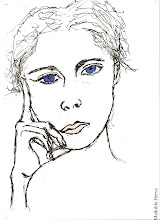By Paul Duncum.
Duncum, P. (2006). Challenges to art education from visual culture studies. In T. Hardy (Ed.), Art education in a postmodern world (pp. 99-112). Bristol, England: Intellect Books.
Main idea and referance:
- Proliferation of mass media.
- The notion of "new times" is a recognition of cultural epoch which many observers have called "postmodern".
- We are satured by visual images just as we satured by languages.
- "Postmodernity" Rf: Baudrillard,1988; Bertns,1995; Jameson,19991; McRobbie,19994.
- "New times" Rf: Hall and Jacques,19991.
- The concept of "New times" has two meanings.
In the postmodern period,a sea change of fundamentally new form of social,cultural and economic arrangements have come to characterize life in the west.
- The treatment of culture as an ordinary, material commodity; the proliferation of electronic visual images and the multifaceted construction of individual identity.
- Most art education appears to be based on the idea that there is something qualitatively special about the fine art.
- By contrast, the images through which the great majority of people creat meaning are seen as pandering to the worst in society: to be conformist, violent, sentimental and manufactured only with dollar signs in mind.
Rf: Gans,1974
- Mass media images saturate our lives, structuring much of what we know beyond personal experience...
- We live through visual images as much as we do language.
- Although images are regarded as a constitutive part of society, society is viewed.
I say, Imagery, like language, serves particular social, political and economic struggles.
- Imagery is a battleground of meaning, a site of ideological struggle, where competing interests co-opt meaning, censor, recontextualize, appropriate and otherwise manipulate meanings to serve their ends.
- Before imagery is aesthetically pleasing or insightful, it is, like language.
Rf: Williams,1977
- Always images tell us more about the interests of those who make images than the subjects represented. Rf: Willis,1993.
Dec 30, 2009
Subscribe to:
Post Comments (Atom)


No comments:
Post a Comment